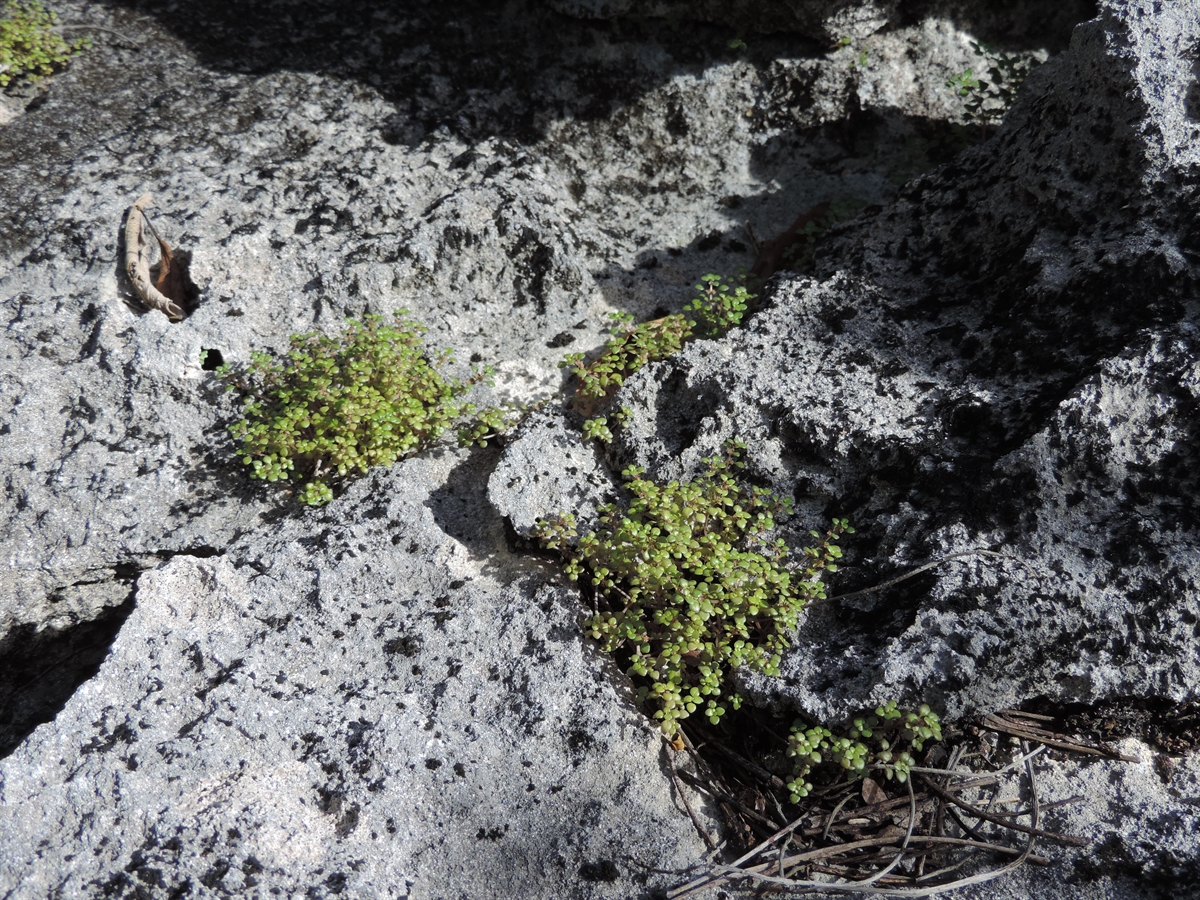Habit: Pilea herniarioides grows as a creeping or prostate herb. The leaves are arranged oppositely in unequal pairs, orbicular to deltoid, to 5 mm in length, with an entire leaf margin, obtuse/rounded leaf apex and a round or tapered leaf base.
Pilea herniarioides is monoecious. The incomplete, imperfect, actinomorphic, flowers are in leaf axils. The pedicellate staminate flowers reduced to 4 tepals and 4 stamens with no ovary. The sessile carpellate flowers reduced to 3 tepal bracts, no stamens, and a superior ovary with 1 locule and ovule. The fruit is a capsule at maturity.
Habitat: Pilea herniarioides grows in open, wet, rocky flats in Dry Broadleaf Evergreen Formation – Forest/Shrublands (coppice).
Distribution: Pilea herniarioides occurs throughout the Lucayan Archipelago as well as the Caribbean region, the southern United States, Mexico, Central and northern South America.
Medicinal/Cultural/Economic usage: Pilea herniarioides is not known to be used medicinally in the Lucayan Archipelago.


